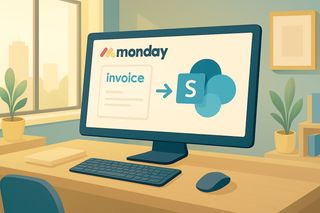Effective file organisation in SharePoint
Proper file organisation in SharePoint is essential for maintaining a scalable, user-friendly and secure document management system. Follow these approaches to optimise your SharePoint environment.
Strategic use of document libraries
- Create separate libraries for different functions, projects or departments
- Avoid storing all files in a single library to improve permissions management and performance
Optimising folder structures
- Maintain shallow folder hierarchies to prevent long URLs
- Replace deep nesting with metadata and custom views for better usability
Implementing metadata for efficient management
- Apply relevant metadata tags such as project name, document type or status
- Configure custom columns to enhance filtering and sorting capabilities
- Utilise content types for categorising different document varieties
Creating effective views
- Develop custom views based on metadata requirements
- Implement filtering, grouping and sorting options to streamline document retrieval
Managing permissions efficiently
- Apply permissions at library level rather than individual files
- Use SharePoint groups to simplify access control management
Version control practices
- Enable version history to track document changes
- Implement check-in/check-out procedures for controlled editing
Establishing naming conventions
- Apply consistent naming patterns (e.g. ProjectName_DocumentType_Date)
- Exclude special characters that may cause synchronisation issues
Enhance your workflows with David Simpson Apps
Discover powerful apps and integrations for monday.com, Atlassian, and Microsoft 365. Streamline processes, embed analytics, and boost collaboration.
Explore appsMaintaining content relevance with archiving
- Implement retention policies for outdated materials
- Create archive libraries to preserve inactive documents
- Implement information management policies for automatic archiving
- Consider third-party archiving tools for large-scale implementations
This is discussed further in "Folder archiving strategies for Microsoft 365 & SharePoint".
User training and adoption
- Provide guidance on metadata usage and version control
- Discourage creation of redundant folders and duplicate uploads
Key takeaways
- Structure document libraries according to business needs rather than using a single repository
- Prioritise metadata over complex folder structures for improved searchability
- Implement clear archiving strategies to maintain system performance
- Apply consistent permission management at library level
- Maintain clear version control and document check-out procedures
- Establish and maintain clear naming conventions
- Provide adequate user training to ensure adoption of best practices






